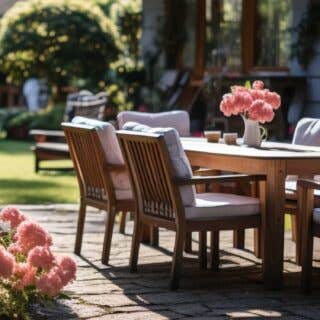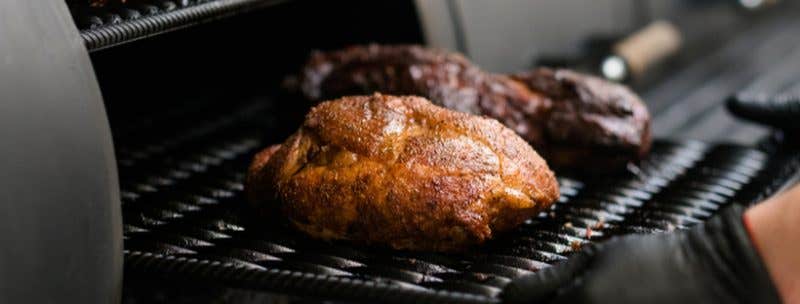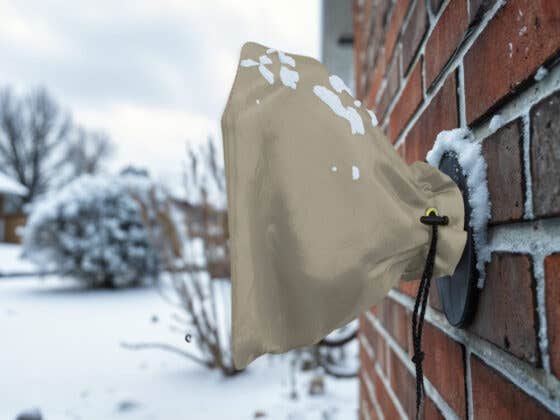Few things in this world compare to the rich flavor of meat you’ve proudly smoked yourself. Smoke is created through the process of combustion, developing the intricate palette of flavor for meat as it sweats. The flavor of smoke can change depending upon the source of heat. This is because each heat source, coal, wood, or otherwise, produces its own unique combustible reaction. As wood burns, for example, it produces a compound called nitrogen dioxide. When NO2 hits the meat, the oxygen molecules dissolve, turning the compound into an acid. This is how meat is able to take on that amazing earthy flavor. From ribs and pork butts to a delicious whole turkey, there’s something rewarding about the science of doing it yourself. And with these tips handy, you’ll be sure to serve up new favorites in your outdoor kitchen.
Rub-A-Dub-Dub
When smoking, the best practice for preparing your meat is to coat it well with a dry rub. A dry rub is a mix of spices and seasonings, without any sort of wet ingredients, that you rub on meat. Dry rubs are usually applied to meats shortly before they go into the smoker, which gives the meat exceptional texture and flavor.
Slow and Steady
The best way to smoke is slowly over low heat for an extended period of time. If you happen to be using a charcoal grill, build your heat source on one side of the grill and place your meat on the opposite side. It’s important to make sure your meat never directly touches the flame, otherwise you might very well find yourself with dry, grilled chicken instead of a moist, smoked bird.
Only You Can Prevent Smoker Fires

Most novices will make the common mistake of adding too much wood or kindle to their smoker, which in turn can cause smoked meats to taste bitter or foul. Just a few chunks of wood help smoke to flow out at an organic rate and prevent a flurry of fire.
Just Add Water
Rapidly fluctuating temperatures can lead to dried out food. Whenever you smoke for a long period of time with wood or charcoal, you can use a pan of water to add a splash of much needed humidity to your conducive smoking environment. The best method is to use a large disposable foil pan, refilling it when necessary.
White Hot Smoke
Streams of clean, white smoke layer your food with incredible flavors. However, in order to achieve that incredible taste, you have to ensure your smoker has adequate ventilation. Proper ventilation draws smoke from the charcoal and wood below so that it swirls over your food, giving you clean, white smoke.
Don’t Go Too Far
In terms of cooking, smoking is a fairly relaxed and low maintenance process. However, it still requires a chef in question to be both mindful and vigilant. Try not to leave the fire unattended and check the temperature every hour or two. Keep more wood or charcoal handy. Like removing an air conditioner cover for the summer season, you may even need to adjust the air ventilation in order to keep things going.
No Bark, No Bite
Smoking meat might lead you down a path of second guessing. You’ve spent the whole day prepping the backyard for a barbecue feast only to have it all come to a screeching halt when that gorgeous pork loin ends up looking like a crusty, mahogany carcass. However, this is exactly how it should look. The darkened crust is called “bark”, which is the result of spices and fat caramelizing over the meat. Before removing your meat from the smoker, it’s key to make sure you have plenty of bark.
A Trick of the Trade
This tip’s a little bit of a secret, so try to keep it between us with a little help from your fence privacy cover. If you mix a spray bottle with equal parts apple cider vinegar and distilled water, you can guarantee your smoked goodness will come out almost perfectly. Every few hours or so, lightly spray a mist of the mixture on the meat. Doing this will preserve moisture and add extra flavor.
Leave The Lid On

Any time you open the lid of your smoker, you lose the two most precious elements that make for luxurious smoked flavor. Heat and smoke go hand and hand in building that robust armona that comes with something delicious cooking. Opening the lid is like letting all your hard work go to waste. Try to resist the temptation and reserve opening the lid only when tending to the fire or moistening up the food with your handy spray bottle. And once you’re done your smoker cover will keep it clean and rust-free, ready for your next adventure in smokery.

















Recent Comments